If engine temperature is constantly exceeding the ideal level, keeping the engine dangerously close to its boiling point, it is important to find the cause as soon as possible. Postponing this, unavoidably results in a burned cylinder head gasket. Read in this manual how get a car radiator under control when engine overheating before it is too late.
Operating temperature is essential
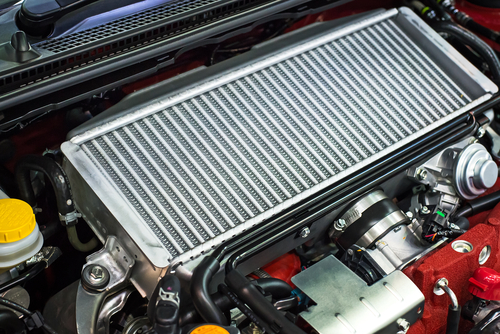 An engine must reach its operating temperature as quickly as possible and maintain it at a constant level in order to function adequately. The main reason lies in the properties of heated metal. All metal engine parts expand when heated. Temperatures caused by internal friction and more particularly combustion are very high.
An engine must reach its operating temperature as quickly as possible and maintain it at a constant level in order to function adequately. The main reason lies in the properties of heated metal. All metal engine parts expand when heated. Temperatures caused by internal friction and more particularly combustion are very high.
All engine components therefore unavoidably expand. To prevent the heated engine from jamming, all parts have a certain clearance when they are cold. This clearance enables the so-called sliding fit as soon as the parts have optimally expanded at operating temperature. If engine would be cooled too much, causing it to remain below operating temperature, internal wear would occur sooner. Adequate temperature regulation is therefore essential to enable the engine to reach operating temperature quickly and maintain it at a constant level.
The cooling circuit of a car
 A car with liquid cooling has two connected cooling circuits. The small circuit circulates coolant through the engine and a small piece of hose outside the engine, enabling the engine to attain operating temperature as quickly as possible.
A car with liquid cooling has two connected cooling circuits. The small circuit circulates coolant through the engine and a small piece of hose outside the engine, enabling the engine to attain operating temperature as quickly as possible.
The large cooling circuit includes the radiator as well as the expansion tank. The connection or valve between the two cooling circuits is the thermostat which is found at the point where three hoses come together. The thermostat is an automatic valve opening or closing according to the temperature of the coolant.
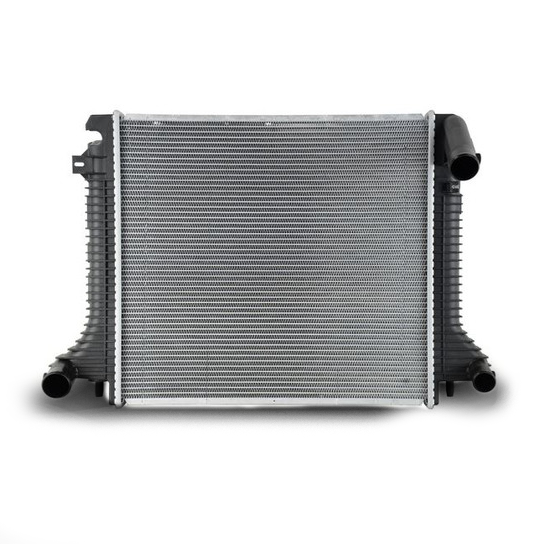
Radiator | Fast shippingat bargain pricesBuy online ⇒ |
The cooling phases of the car are:
| Engine cold → small cooling circuit active → engine is not being cooled |
| Engine reaches operating temperature → thermostat opens → car radiator tempers coolant temperature |
| Engine temperature reaches the coolant’s upper tolerance limit → car radiator fan switches on. |
| Engine exceeds operating temperature → check engine light is on. |
| Engine temperature continues to rise → expansion tank bursts, coolant hose bursts, pressure relief valve opens (depending on a car type) |
| Car continues driving → plungers jam in the cylinder, cylinder head gasket burns through – engine is destroyed, car stands still. |
If the engine’s warning signals are ignored for too long, it sooner or later destroys itself.
Looking for the cause of engine overheating
An engine overheating can have three causes:
– the engine is losing coolant
– the cooling circuit is defective.
– the cooling performance is insufficient
Loss of coolant occurs through leakage. Leakage can occur outward as well as inward. Outward leakage is easy to find: simply follow the entire cooling circuit. The conspicuously coloured antifreeze agent will show the damaged spot.
If there is a permanent coolant deficiency, but no leakage can be identified, the cylinder head gasket could be damaged. This will show by permanent white exhaust and excessive internal pressure in the cooling circuit. A sweet smell of the antifreeze in the interior indicates a defect of the interior heating.
The circulation can be compromised by a defective thermostat, clogging of the cooling circuit or a defective water pump. Thermostats can gradually cease to function. Fortunately their replacement is very easy. A diagnosis of a clogged circuit is difficult. Generally, the only option is step-by-step replacement of all hoses and conduits. The water pump should always be replaced according to maintenance schedule. This is a wear part with a rather specifically determined life span.
The cause of a bad cooling performance is generally a defective car radiator, which should be quite obvious:
– the radiator is damaged and dented
– the radiator is heavily corroded
– the cooling lamella (slats) are falling out.
If the car radiator is seriously damaged it should be replaced as soon as possible. For safety reasons the thermostat is replaced as well and the cooling circuit is thoroughly rinsed.
Replacing the car radiator
Replacing a car radiator is not difficult and spare parts are not as expensive as you would think. They are cheap enough to warrant their purchase as a new part. Makeshift solutions with used radiators from the scrapheap are not recommended.
1. Draining coolant
|
|
2. Inspecting coolantIf the coolant is dirty brown and murky, it is contaminated with oil. The probable cause is a defective cylinder head gasket or a damaged valve. |
|
3. Removing fan
|
|
4. Disassembling the car radiator
|
|
5. Installing a new car radiator
The fan is installed as well and the cooling circuit is filled with water. Be certain to always use the correct antifreeze. Using the wrong antifreeze can cause damage to gaskets and hoses! After installation of a car radiator and fan and filling the circuit with coolant, the system must be vented. |
|
6. Venting the cooling circuit
|
|
7. Testing the cooling systemThe cooling system is now tested with a test drive. The cooling circuit is functioning adequately when the operating temperature rises fast and maintains itself at optimal level. When the operating temperature has been reached, let the car run idle until the fan engages. Do not wait until a cylinder head burns. If the fan does not engage at the highest tolerance value of the operating temperature, switch off the engine and allow it to cool down. Subsequently, the fan needs inspection and repair.
|
Safe driving with an intact cooling circuit
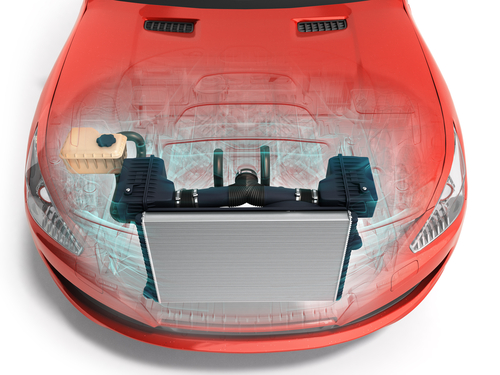 An intact cooling circuit, receiving timely maintenance considerably contributes to safe driving. Nothing is more diverting than having to constantly keep an eye on the operating temperature. In case of a car radiator replacement, thorough action is worthwhile for a durable solution. A new water pump, thermostat and fresh coolant make the car fit for many years of care-free driving.
An intact cooling circuit, receiving timely maintenance considerably contributes to safe driving. Nothing is more diverting than having to constantly keep an eye on the operating temperature. In case of a car radiator replacement, thorough action is worthwhile for a durable solution. A new water pump, thermostat and fresh coolant make the car fit for many years of care-free driving.
Foto: NosorogUA, Nejron Photo, AppStock, Take Photo, sarawutnirothon, Visionsi, Sexmidnight, Alraun, Denis Tabler / shutterstock.com

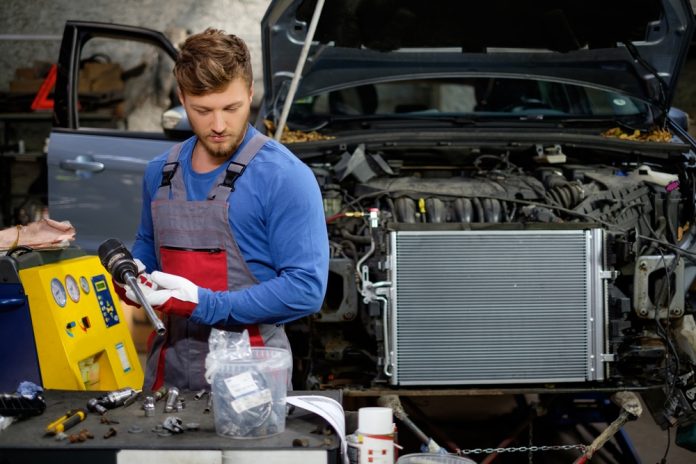
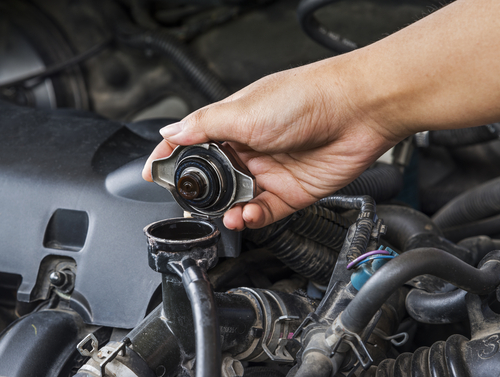
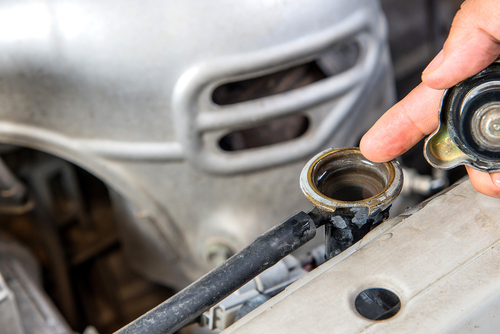
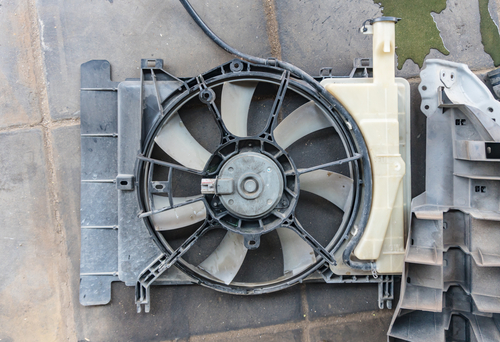
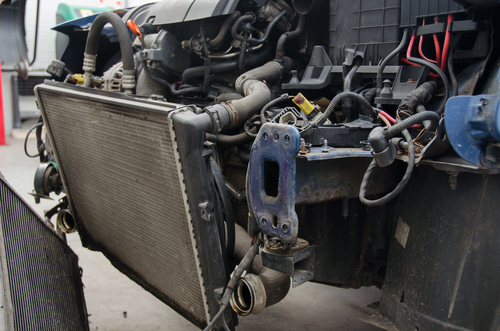
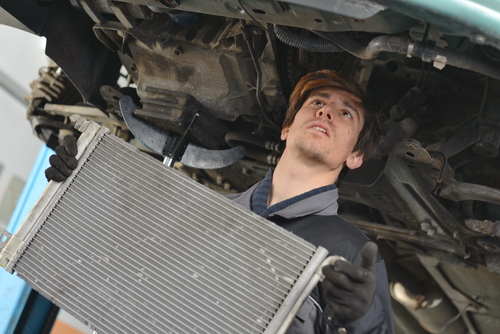
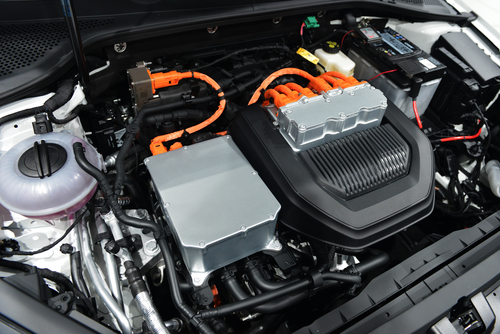
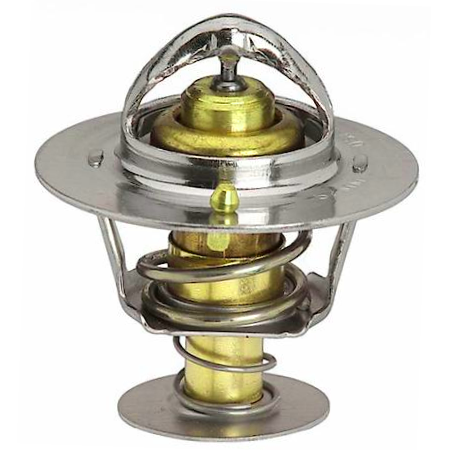


 (9 votes, average: 3.44 out of 5)
(9 votes, average: 3.44 out of 5)







